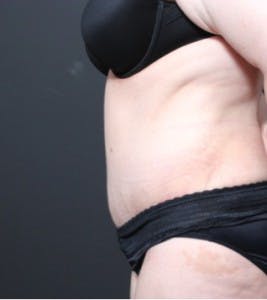Although patient goals with regards to their final tummy tuck result may vary almost all will want to have a flat profile when healing is finally complete. When the side profile is convex (rounded) as opposed to flat this is sometimes referred to as abdominal bulging. There are different types of abdominal bulging and different reasons for not having a flat tummy tuck result.
Types of abdominal bulging:
- Upper (above belly button)
- Lower (below belly button)>
- Central (around belly button)
- liWhole (the entire abdomen)
- Side (to the side of the belly button)
- Multiple (various separate areas)
Reasons for abdominal bulging:
- Excess fat under the abdominal wall (inside the abdomen)
- Excess fat on top of the abdominal wall (under the skin)
- Loose abdominal wall
- Irregularly tightened abdominal wall
- Seroma/Hematoma
- Pseudo-bursa
When an abdomen is evaluated for an abdominoplasty (tummy tuck procedure) care should be taken to look at the overall patient in terms of height, weight, pelvic width, abdominal wall looseness, intra-abdominal fat, and subcutaneous (under the skin) fat. The curvature of the spine is also sometimes helpful as this can push out the abdomen for some patients. Both educating the patient as well as controlling these aspects as much as possible will maximize the chance of a flat tummy as well as provide an idea of what can and what cannot be accomplished.
There are some things that can happen after surgery that can change the side profile of a flat tummy into a bulging tummy side profile. Some of these possible changes include:
- -Loosening of the abdominal wall repair
- -Seroma
- -Hematoma
- -Pseudo-bursa
There is really only one source of abdominal bulging that cannot be repaired and that is fat within the abdomen under the abdominal wall around the abdominal organs. Other than that, all of the other sources of abdominal bulging can be repaired. Sometimes relatively small procedures such as liposuction (for bulging secondary to excess fat under the skin) or drain placement (for bulging secondary to seroma) can be performed to correct the problem. More often, a full tummy tuck revision is needed to correct the other potential sources of abdominal bulging including pseudo-bursa, loose abdominal wall, or irregular abdominal wall tightening.
Abdominal bulging after a tummy tuck is unfortunate but does happen. If proper patient evaluation is performed, surgery is performed well, and healing occurs well, abdominal bulging after tummy tuck can be prevented. If abdominal bulging after tummy is present it can be repaired.
All the best,
Dr. Remus Repta



